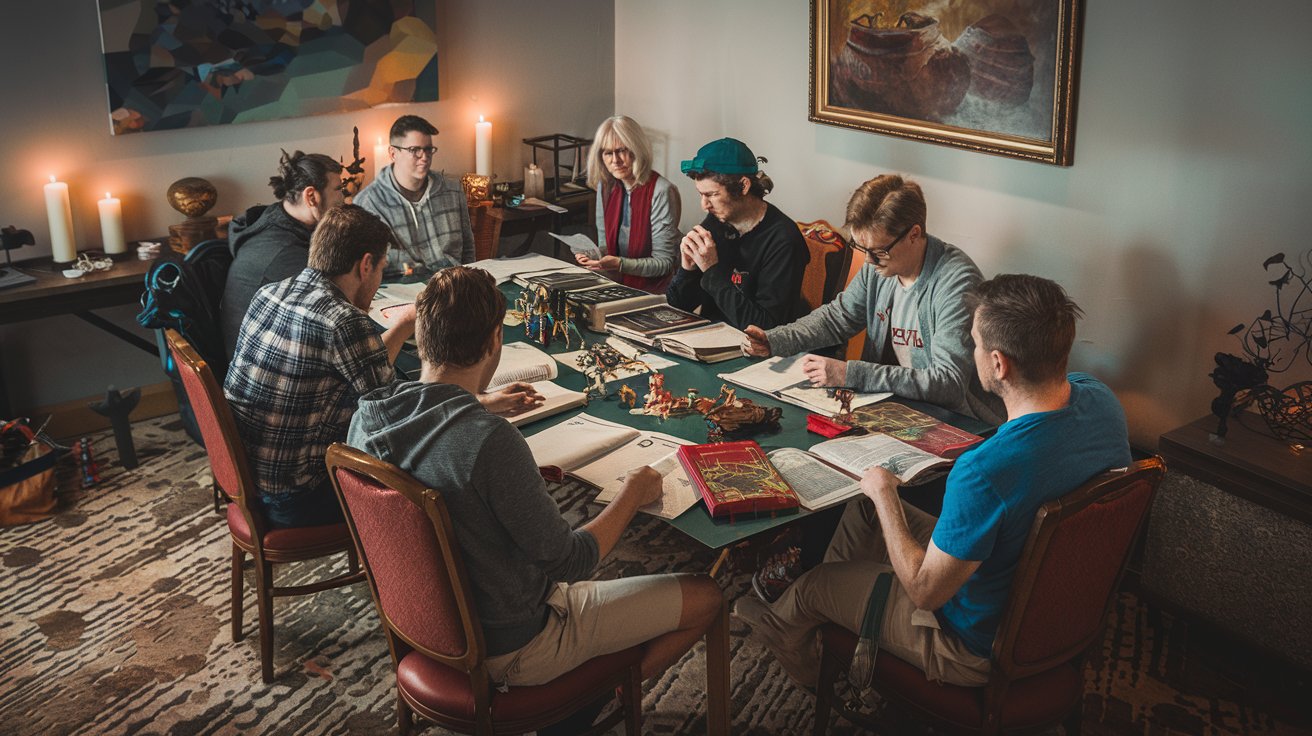In an age of cutting-edge graphics and cinematic storytelling, classic role-playing games (CRPGs) continue to captivate gamers worldwide. These digital adventures—with their deep narratives, complex character development, and tactical gameplay—offer experiences that modern games often can’t match. Whether you’re a nostalgic veteran returning to old favorites or a curious newcomer wondering what all the fuss is about, this guide will walk you through everything you need to know about CRPGs and how to enjoy them in 2025.
What Are Classic RPGs (CRPGs)?
Classic Role-Playing Games, commonly abbreviated as CRPGs, represent the computer-based evolution of tabletop role-playing games like Dungeons & Dragons. Emerging in the late 1970s and flourishing throughout the 1980s-2000s, these games prioritize deep storytelling, character progression, meaningful choices, and strategic combat.
Unlike their action-RPG cousins, CRPGs typically feature:
- Turn-based or real-time with pause combat systems
- Extensive dialogue trees and narrative choices
- Character creation with detailed stats and abilities
- Party-based gameplay where you control multiple characters
- Complex rule systems derived from tabletop RPGs
Notable CRPG series include Baldur’s Gate, Fallout, Planescape: Torment, Ultima, Might & Magic, and Wasteland. Modern revivals like Pillars of Eternity, Pathfinder, and Divinity: Original Sin have breathed new life into the genre while preserving its core principles.
Why CRPGs Remain Popular in 2025

Despite their age, many classic RPGs have maintained dedicated followings and continue to influence game design today. Here’s why they remain relevant:
Unparalleled Narrative Depth
While many modern games offer linear storylines, CRPGs provide branching narratives where player choices genuinely matter. Games like Planescape: Torment contain over 800,000 words—more text than many novels. This narrative freedom creates unique experiences where players genuinely shape their own stories.
Complex, Rewarding Systems
CRPGs reward players who master their intricate mechanics. Understanding how different abilities interact or discovering powerful character builds provides satisfaction that simplified modern systems often lack. The learning curve may be steeper, but the payoff is more rewarding.
Player Agency and Choice
Choice is fundamental to the CRPG experience. Whether deciding a character’s moral path in Fallout, choosing faction allegiances in Arcanum, or navigating the political landscape of Baldur’s Gate, these games respect player decisions and reflect those choices in meaningful ways.
Imagination-Friendly Design
While technical limitations once necessitated simpler graphics, many players appreciate how CRPGs engage the imagination. Text descriptions and atmospheric music create mental images that sometimes surpass what can be rendered on screen, similar to how books can create more vivid imagery than films.
Enhanced Accessibility
Modern platforms have made classic RPGs more accessible than ever. Enhanced editions optimized for contemporary hardware, quality-of-life improvements, and digital distribution have eliminated many of the technical frustrations that once accompanied these games.
Getting Started with CRPGs: A Beginner’s Guide

Ready to dive into the world of classic RPGs? Here’s how to begin your adventure:
1. Choose the Right Entry Point
Not all CRPGs are equally approachable for newcomers. Consider starting with these more accessible titles:
- Divinity: Original Sin 2 (2017) – A modern CRPG with intuitive systems and co-op play
- Baldur’s Gate: Enhanced Edition (2012) – The definitive version of a CRPG cornerstone
- Fallout (1997) – A post-apocalyptic classic with straightforward mechanics
- Disco Elysium (2019) – A narrative-focused CRPG that minimizes combat complexity
2. Understand Common CRPG Elements
Familiarize yourself with these common CRPG conventions:
Character Creation
Most CRPGs begin with character creation, where you’ll select:
- Race/Species: Affects abilities, resistances, and how NPCs react to you
- Class: Determines your combat style and available skills
- Attributes: Core statistics like Strength, Intelligence, and Dexterity
- Skills: Specialized abilities for combat, conversation, or exploration
- Background: Your character’s history, which may affect story options
Take your time with this process—your choices will impact your entire playthrough.
Combat Systems
CRPGs typically use one of two combat systems:
- Turn-based: Combat proceeds in rounds where characters act according to initiative order. Examples include Fallout and Divinity: Original Sin.
- Real-time with pause: Combat unfolds in real-time, but you can pause at any moment to issue commands. Examples include Baldur’s Gate and Icewind Dale.
Both systems require tactical thinking rather than twitch reflexes.
Save Frequently
CRPGs can be challenging and unforgiving. Create multiple save files and save often—particularly before major decisions or difficult encounters.
3. Essential Tools and Resources
Enhance your CRPG experience with these helpful resources:
- Digital distribution platforms: GOG.com specializes in optimized versions of classic games
- Community patches: Fan-made updates often fix bugs and compatibility issues
- Wikis and forums: Communities like RPG Codex and GOG forums provide valuable guidance
- Mod managers: Tools like Nexus Mod Manager simplify installing community enhancements
4. Managing the Learning Curve
CRPGs can initially feel overwhelming. Follow these tips to ease the transition:
- Read the manual: Unlike many modern games, CRPG manuals contain crucial information
- Start on easier difficulty settings: You can always increase the challenge later
- Focus on the main quest first: Side content will make more sense once you understand core systems
- Don’t be afraid to restart: Your second character will benefit from your newfound knowledge
The CRPG Renaissance: Modern Classics Worth Playing

The past decade has seen a remarkable revival of CRPG design principles. These modern titles combine classic depth with contemporary conveniences:
Pillars of Eternity Series
Obsidian Entertainment’s spiritual successor to Baldur’s Gate features a richly detailed original fantasy world, deep character customization, and thoughtful exploration of philosophical themes.
Pathfinder: Kingmaker and Wrath of the Righteous
Based on the popular tabletop RPG, these games combine traditional CRPG elements with kingdom management and mythic character progression.
Disco Elysium
This groundbreaking CRPG reimagines the genre by focusing entirely on narrative and skill checks, eliminating combat entirely while providing unprecedented role-playing freedom.
Wasteland 2 and 3
Reviving the series that inspired Fallout, these post-apocalyptic RPGs feature squad-based tactical combat and morally complex storytelling.
Playing CRPGs on Modern Hardware
Technical barriers once limited CRPG accessibility, but modern solutions have largely eliminated these issues:
Enhanced Editions
Publishers like Beamdog have released enhanced editions of classics like Baldur’s Gate, Planescape: Torment, and Icewind Dale with:
- Widescreen support and UI scaling
- Engine improvements and bug fixes
- Quality-of-life features like area maps and quest logs
- Additional content and expanded character options
Emulation and Compatibility Layers
For games without official updates, solutions like DOSBox, ScummVM, and compatibility modes can run older titles on modern systems.
Mobile and Console Adaptations
Many CRPGs now offer touch-optimized interfaces or controller support, making them playable on tablets, smartphones, and consoles.
The Unique Appeal of CRPG Combat
Combat in CRPGs offers a distinct experience compared to action RPGs:
Tactical Depth Over Reflexes
CRPG combat emphasizes planning, positioning, and resource management rather than button-pressing skill. A well-executed strategy is more important than quick reactions.
Party Synergy
Managing a full party allows for fascinating ability combinations. A fighter might taunt enemies while your wizard positions for an area attack, creating satisfying tactical moments.
Environmental Interactions
Modern CRPGs particularly excel at environmental combat tactics. In games like Divinity: Original Sin 2, you can electrify water puddles, create oil slicks, or use terrain elevation for tactical advantages.
Building Memorable Characters in CRPGs
Character development sits at the heart of the CRPG experience:
Mechanical Development
Watch your characters evolve from vulnerable beginners to powerful heroes through:
- Leveling systems: Gaining experience points to improve abilities
- Equipment progression: Finding increasingly powerful gear
- Skill specialization: Focusing on specific abilities to create unique builds
Narrative Development
Many CRPGs allow characters to grow through story choices:
- Dialogue options: Personality-based responses shape how others perceive you
- Moral decisions: Ethical choices affect both story outcomes and sometimes mechanical elements
- Companion relationships: Developing friendships, rivalries, or romances with party members
Preserving Gaming History: Why CRPGs Matter
Beyond entertainment value, CRPGs represent important artifacts of gaming history:
Technological Innovation
Early CRPGs pushed hardware limitations to create immersive worlds and pioneered techniques still used in game development.
Narrative Advancement
Games like Planescape: Torment demonstrated that video games could explore complex philosophical themes and emotional depth.
Design Influence
The DNA of CRPGs can be found in countless modern games across genres, from open-world adventures to narrative indies.
Conclusion: Timeless Adventures Await
Classic RPGs offer experiences unlike anything else in gaming—worlds where choices matter, characters grow meaningfully, and stories unfold according to player agency. Whether revisiting beloved classics or discovering these gems for the first time, CRPGs reward patient players with unparalleled depth and satisfaction.
The resurgence of CRPG-inspired games proves these design principles remain as compelling as ever. In our era of flashy but sometimes shallow gaming experiences, the thoughtful, player-driven narratives of CRPGs provide a refreshing alternative.
So create a character, gather your party, and venture forth into these remarkable digital worlds. The adventures that await may be decades old, but the experiences they offer remain timeless.

Zareb Saleh is a journalist at Gulf Today and a ghostwriter for Gameoholic, specializing in gaming, technology, and digital culture. With a keen eye for industry trends, he delivers insightful stories that engage and inform readers.




